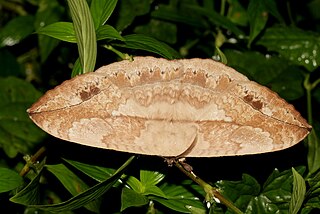Related Research Articles

Spilomelinae is a very species-rich subfamily of the lepidopteran family Crambidae, the crambid snout moths. With 4,135 described species in 344 genera worldwide, it is the most speciose group among pyraloids.

Omiodes is a moth genus in the family Crambidae. Several species are endemic to Hawaii.

Cirrhochrista is a genus of moths of the family Crambidae described by Julius Lederer in 1863.

Paliga is a genus of moths of the family Crambidae erected by Frederic Moore in 1886.
Prorodes is a genus of moths of the family Crambidae. It was described by Charles Swinhoe in 1894, with Prorodes mimica as type species.

Thliptoceras is a genus of moths of the family Crambidae. The genus was erected by William Warren in 1890.

Bertula is a genus of moths of the family Erebidae. The genus was erected by Francis Walker in 1859.

Bocula is a genus of moths in the family Erebidae. The genus was erected by Achille Guenée in 1852.
Mecodina is a genus of moths of the family Erebidae first described by Achille Guenée in 1852.

Melipotis is a genus of moths in the family Erebidae first described by Jacob Hübner in 1818.

Platyja is a genus of moths of the family Erebidae erected by Jacob Hübner in 1823.

Tathorhynchus is a monotypic moth genus in the family Erebidae erected by George Hampson in 1894. Its only species, Tathorhynchus exsiccata, the Levant blackneck or double-spotted snout, was first described by Julius Lederer in 1855. The nominate form is found on the Canary Islands and in North Africa, tropical Asia and tropical Africa. It has been introduced in Dominica and Argentina. Subspecies Tathorhynchus exsiccata fallax is found in the northern half of Australia, as well as Norfolk Island and New Zealand.

Asota is a genus of moths in the family Erebidae first described by Jacob Hübner in 1819. Species are widely distributed throughout Africa, India, Sri Lanka, Myanmar, the Malayan region and tropical parts of the Australian region.

Herochroma is a genus of moths in the family Geometridae. The genus was described by Charles Swinhoe in 1893.

Syringoseca mimica is a moth of the family Oecophoridae. It is known from the Australian Capital Territory, New South Wales, Queensland, South Australia, Tasmania, Victoria and Western Australia.
Abantiades albofasciatus is a moth of the family Hepialidae. It is endemic to Western Australia.
Prorodes leucothyralis is a moth in the family Crambidae. It was described by Paul Mabille in 1900. It is found on Madagascar.
Syllepte carbatinalis is a moth in the family Crambidae. It was described by Charles Swinhoe in 1890. It is found in Myanmar.

Eupterote is a genus of moths in the family Eupterotidae. It was first described by Jacob Hübner in 1820.

Margaroniini is a tribe of the species-rich subfamily Spilomelinae in the pyraloid moth family Crambidae. The tribe was erected by Charles Swinhoe and Everard Charles Cotes in 1889, originally as family Margaronidae.
References
- ↑ Nuss, Matthias; Landry, Bernard; Mally, Richard; Vegliante, Francesca; Tränkner, Andreas; Bauer, Franziska; Hayden, James; Segerer, Andreas; Schouten, Rob; Li, Houhun; Trofimova, Tatiana; Solis, M. Alma; De Prins, Jurate & Speidel, Wolfgang (2003–2020). "GlobIZ search". Global Information System on Pyraloidea. Retrieved April 22, 2020.
- ↑ Savela, Markku. "Prorodes mimica Swinhoe, 1894". Lepidoptera and Some Other Life Forms. Retrieved June 19, 2018.
- ↑ Herbison-Evans, Don & Crossley, Stella (March 19, 2012). "Prorodes mimica Swinhoe, 1894". Australian Caterpillars and their Butterflies and Moths. Retrieved June 19, 2018.
 This article incorporates text from this source, which is in the public domain .
This article incorporates text from this source, which is in the public domain . - ↑ Annals and Magazine of Natural History. (6) 17 (97): 102.